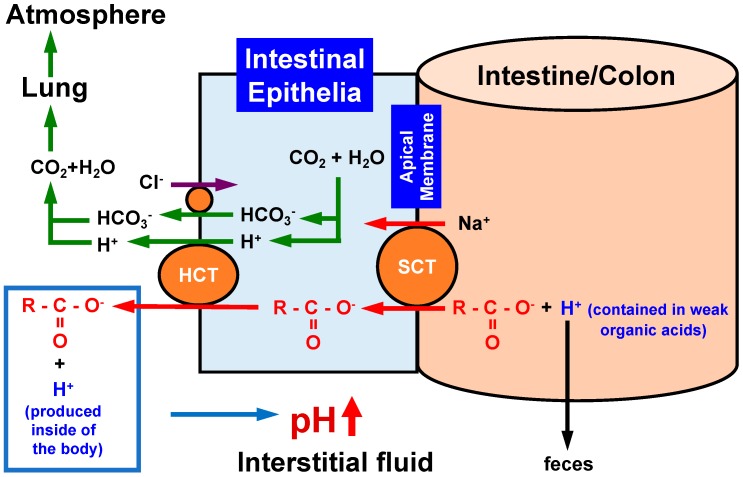Figure 5.
Action of oral intake of foods containing weak organic acids with carboxyl groups on pH regulation of the interstitial fluid. When we intake the weak organic ‘acid’ containing a carboxyl part (R-COO−), only the carboxyl part (R-COO−) is absorbed via sodium-coupled carboxylate transporters (SCT) expressed in the apical membrane of the intestine. Incorporated carboxyl groups are transported from the intracellular space to the extracellular space (the interstitial space) of epithelial cells via H+-coupled carboxylate transporters (HCT). H+ contained in weak organic acids is not absorbed in the intestine, but is excreted into feces. Thus, weak organic acids behave as ‘bases’ by combing with H+ produced in the body, elevating pH. This means that weak organic acids play a role as pH buffers in the interstitial fluid.

